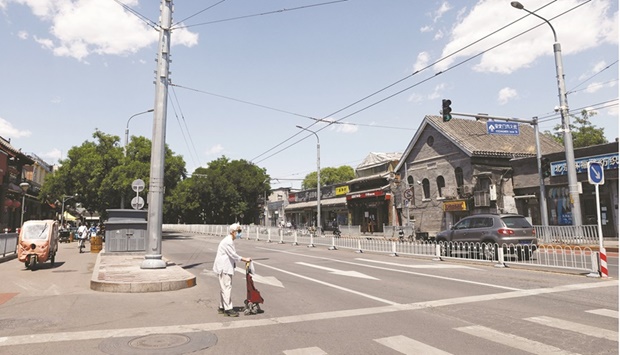China’s economy is in some respects faring worse than in 2020 when the pandemic first emerged, Premier Li Keqiang said, urging efforts to reduce a soaring unemployment rate.
“Economic indicators in China have fallen significantly, and difficulties in some aspects and to a certain extent are greater than when the epidemic hit us severely in 2020,” Li said on Wednesday following a meeting with local officials, state-owned companies and financial firms to discuss how to stabilise the economy.
His remarks came after economists surveyed by Bloomberg forecast China’s economy will grow 4.5% this year, well below the government’s target of about 5.5%. Beijing’s priority on coronavirus control is raising the prospect that it will admit to missing its GDP target by a large margin for the first time ever this year.
The premier called on officials to make sure the unemployment rate falls and the economy “operates in a reasonable range” in the second quarter of this year, state media cited him as saying.
The nation’s surveyed jobless rate climbed to 6.1% in April, the highest since February 2020.
The meeting is the latest in a series of calls by Li to shore up growth, which has come under enormous pressure since March from Covid outbreaks and President Xi Jinping’s commitment to zero-Covid, requiring strict restrictions on activity where outbreaks occur.
He stressed implementation of current support policies, adding that economic data for the second quarter would be released “accurately.”
Li indicated that China will try to reduce the impact of its strict coronavirus control policies on the economy, without giving details on how that would be achieved. “At the same time as controlling the epidemic, we must complete the task of economic development,” he said.
Beijing has never admitted to missing its annual growth target by a large margin since it began setting such goals more than three decades ago.
It didn’t set a target in 2020, when the coronavirus pandemic first hit.
China’s industrial production and retail sales both contracted year-on-year in April, according to official data.
Economic contraction continued this month, according to high frequency indicators, such as truck flows between cities.
In the week through May 15, a road freight index produced by Chinese company G7 Connect fell 18% from a year ago, a company executive told local media this week.
G7 added in a social media post on Wednesday that truck flows in Shanghai, which has been under a strict lockdown since March, stood at just 20% of pre-pandemic levels over the last two weeks.
Most Chinese freight travels by truck, and economists based at the Chinese University of Hong Kong and other universities found truck flows and China’s economic output are highly correlated.
Xi has laid the groundwork for treating the GDP target as just one goal among several for officials to aim at, writing into a key Communist party document last year that it should no longer be a “sole criterion of success.”
Jeremy Wallace, an expert on China’s economic policy making at Cornell University, said it’s likely that Beijing “will argue that below-target growth was justified by needed Covid measures.”
Beijing hasn’t explicitly mentioned the growth target since March.
Instead, Li and other officials have repeatedly stressed the importance of employment, which the government can boost by subsidising companies to retain workers to keep unemployment below its target of under 5.5%, even if they can’t perform their usual work tasks due to virus controls.
The nation’s leadership is trying to put a floor on growth especially as repeated lockdowns raise the chance that China’s economy will grow more slowly than the US for the first time since 1976.
Economists expect additional stimulus which could include cash handouts to households and financial support for the tech sector.
“Beijing will try to climb down from the 5.5% target,” said Houze Song, an economist at think tank MacroPolo. “How Beijing handles the situation in the coming months will matter more than missing the target.

An elderly woman waits to cross a street, amid the coronavirus disease (Covid-19) outbreak in Beijing on Wednesday. China’s priority on coronavirus control is raising the prospect that it will admit to missing its GDP target by a large margin for the first time ever this year.
